Types of Cat Food: The Good & The Bad
October 24, 2024 | By David Jackson
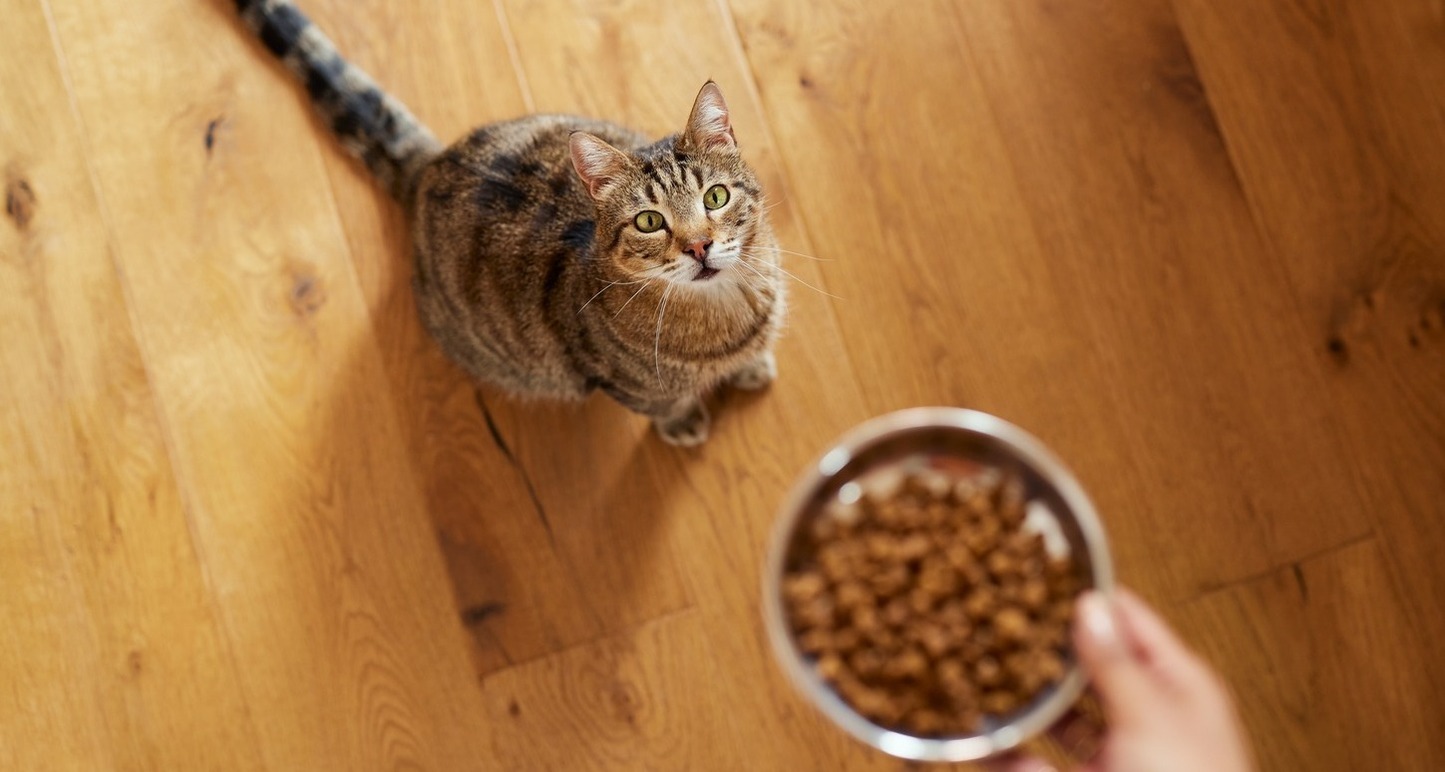
Whether it’s dog food, fish food, or food for your pet gerbil, choosing the right pet food for your beloved animal pal can be a challenge for many pet owners, and cat owners are of no exception.
It’s well known that many cats have specific nutritional needs that vary by age, health condition, lifestyle and, indeed, breed. And with the wide range of cat food options available, from dry kibble to homemade meals, it's vital you understand the differences between each type of food. Armed with this knowledge, you will be able to ensure your furry feline receives the best nutrition to live a healthy life.
In this article, we’ll explore the various types of cat food available, weighing their pros and cons, and provide insights into which type is best for different stages of your cat's life, all the way from tiny kittens to senior cats, and everything in between.
Table of Contents
Table of Contents
What Are the Different Types of Cat Food?
By 2029, the pet food market in the United Kingdom is projected to grow by 15%. It’s expected that a large portion of this forecasted growth will be driven by the cat food industry.
Much in the same way that dog food has dominated the pet food market in recent years, a similar movement is anticipated for cat food with more owners showing an interest in understanding the best, and most nutritious ways to feed their cats.
There are six primary types of cat food available on the market, each offering distinct benefits and drawbacks. These include:
- • Dry Cat Food: The most common type, dry food, is popular for its affordability and convenience.
- • Wet Cat Food: Known for its high moisture content, wet food is often more palatable for cats.
- • Raw Cat Food: This diet attempts to replicate a cat’s natural diet in the wild, emphasising raw meat, bones, and organs.
- • Fresh Cat Food: Made from fresh ingredients, this food often requires refrigeration and is free from preservatives.
- • Homemade Cat Food: This option allows owners to control the ingredients and tailor meals to their cat’s specific needs.
- • Complete/Complimentary Cat Food: Complete foods meet all a cat’s nutritional needs, while complementary foods must be supplemented with other types of food.
Each type has its own role in cat nutrition as different types may be suited to different cats based on their age, health status, and dietary preferences. And don’t forget about allergies.
Dry Cat Food
Pros
Convenience
One of the biggest advantages of dry cat food is its convenience. It’s easy to store, has a long shelf life, and doesn't take up precious space in your fridge once opened. This makes it a practical option for many cat owners.
Cost-effective
Dry cat food is typically more affordable than other types of food and buying in bulk can further reduce costs. It’s also easy to portion out for meals, allowing better control over feeding, which is great if weight management of your furry friend is a concern.
Dental Benefits
Dry kibble can help scrape away plaque from your cat’s teeth as they chew, promoting better oral health. Some brands even produce specially formulated dry food that specifically targets dental care.
Cons
Low Moisture Content
One major downside of dry cat food is its low water content. Cats naturally have a low thirst drive, so they may not drink enough water to compensate for the lack of moisture in their food.
This may lead to dehydration and urinary tract issues in your cat, particularly in older cats or those prone to kidney disease.
Higher Carbohydrate Content
Many dry cat foods contain more carbohydrates than your cat realistically needs. You see, cats are obligate carnivores and require a diet rich in protein and fat. A high-carbohydrate diet may contribute to obesity and other health issues, particularly if the food you feed contains low-quality fillers.
Wet Cat Food

Pros
High Moisture Content
Wet cat food contains a significant amount of water, which helps keep your four-pawed pal hydrated, particularly if they don’t drink much water on their own.
This can reduce the risk of urinary tract infections and kidney disease.
More Palatable
Many cats find wet food more appetising than dry food due to its rich flavour and soft texture.
It’s often easier for your cat to chew, making it a better option for young kittens, older cats with dental problems, or if your cat is a bit of a picky eater.
Cons
Short Shelf Life
Once opened, wet food spoils quickly and needs to be popped into the fridge to keep it fresh. It must be consumed within a day or two to prevent spoilage, after all, you don’t want to feed your cat food with rot as it may get sick. This can be inconvenient for some.
Cost
Wet food is generally more expensive than dry food, especially if it’s the primary component of your cat’s diet. Feeding wet food exclusively can be costly over time, especially if you have a multi-cat, or multi-pet, home.
Dental Health
Unlike dry food, wet food does not have the same mechanical action of scraping away plaque, which means it doesn’t contribute to dental health in the same way that kibble does.
Raw Cat Food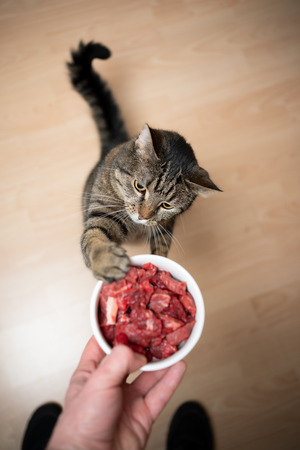
Pros
Mimics Natural Diet
Raw diets attempt to replicate what your cat might eat in the wild, such as raw meat, bones, and organs. These diets are high in protein and fat, which closely aligns you’re your cat’s natural dietary needs.
High Nutrient Value
Because raw food isn’t cooked, it retains more of its natural nutrients, such as vitamins and enzymes, that can be lost during the cooking process in other types of cat food.
Lots of folk who advocate for raw feeding believe this provides a more natural and healthier diet for their cats.
Cons
Risk of Contamination
One of the biggest risks of feeding raw food – whether this is dog food or cat food - is the potential for bacterial contamination, such as Salmonella or E. coli. Both cats and their owners can be exposed to these harmful pathogens which can make your very sick indeed.
Careful handling and preparation of raw food in your home is essential to reduce these risks.
Nutritional Imbalance
Unless you carefully plan your cats’ meals, a raw diet can lack essential nutrients, such as taurine, which cats need to stay healthy. It’s recommended that raw diets are supplemented with vitamins or are formulated under the guidance of your veterinarian or pet nutritionist.
Time and Effort
Preparing a raw diet for your cat can be time-consuming, requires careful planning and proper storage to ensure freshness and safety. It can be a rather big process, but if you enjoy it and you have the time and space, then there can be great benefits to feeding a raw diet to your cat.
Fresh Cat Food
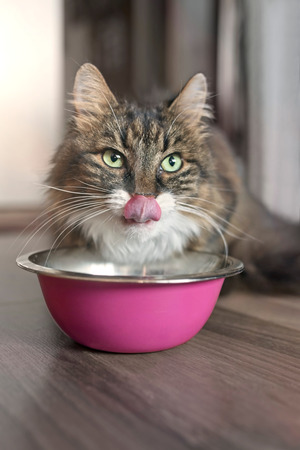
Pros
High-Quality Ingredients
Fresh cat food is made from high-quality ingredients, typically free from preservatives and fillers, which ensures better nutrition for your feline friend.
This type of food is often human-grade and prepared from fresh meat, vegetables, and grains. You often find that a lot of thought has been put into the composition and ratios of meat to veg to grains too.
Customisable
Many fresh food services offer personalised meal plans tailored to your cat’s specific health needs, including dietary restrictions, weight management, and sensitivities or allergies. This can provide an optimal balance of nutrition for your pet.
Cons
Expensive
Fresh food is typically more expensive than dry or canned options due to the higher quality ingredients and preparation involved. Regular delivery services for fresh food can add up over time, although there are many subscription services where you may be able to make a small saving in the long run.
Storage and Shelf Life
Fresh food must be stored in your fridge or freezer, which can be less convenient for some homes, particularly if you also have a dog or more than one cat. It also spoils more quickly than dry food or canned food. This means you need to be aware and keep track of use-by dates.
Homemade Cat Food
Pros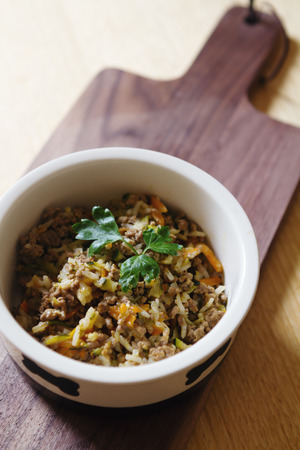
Control Over Ingredients
Homemade cat food gives you complete control over what goes into your cat’s meals.
This is great if your cats suffers with food allergies or sensitivities, as you can avoid ingredients that might trigger a reaction.
Customisable to Health Needs
You can even tailor homemade food to your cat’s specific health conditions, such as weight management, urinary health and even skin conditions.
This allows for a highly personalised diet that can target individual health goals of your pet.
Cons
Nutritional Challenges
Ensuring your cat’s homemade food contains all the necessary nutrients is critical. All cats require certain nutrients, such as taurine, vitamins, and minerals, which must be present in the right amounts for optimum health.
Homemade diets can often lack the precision of commercial cat food which may lead to nutritional deficiencies without proper planning.
Time and Effort
Preparing homemade cat food is time-consuming and requires careful planning, cooking, and portioning. It can also be more expensive in the long run, depending on the ingredients you choose to use.
Complete/Complimentary Cat Food
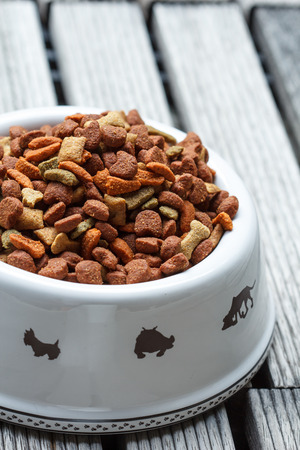
Pros
Nutritionally Balanced
Complete cat food is formulated to meet all the nutritional needs of your cat, containing the correct balance of protein, fat, vitamins, and minerals.
This guarantees your cat gets everything they need in one food source, which leads to...
Convenience
Both complete and complementary cat foods are convenient options for busy pet owners with busy lives.
Complete foods don’t require any supplementation, while complementary foods can be used to mix with other food types to add a little variety for your cat.
Cons
Quality Variability
The quality of complete and complementary foods can vary greatly between brands. Some may use low-quality fillers or artificial ingredients, so it’s essential to read labels carefully and choose reputable brands that provide your cat with what it needs. Remember, choosing a cat food is not as simple as one food for all, as what works for one cat may not work for another.
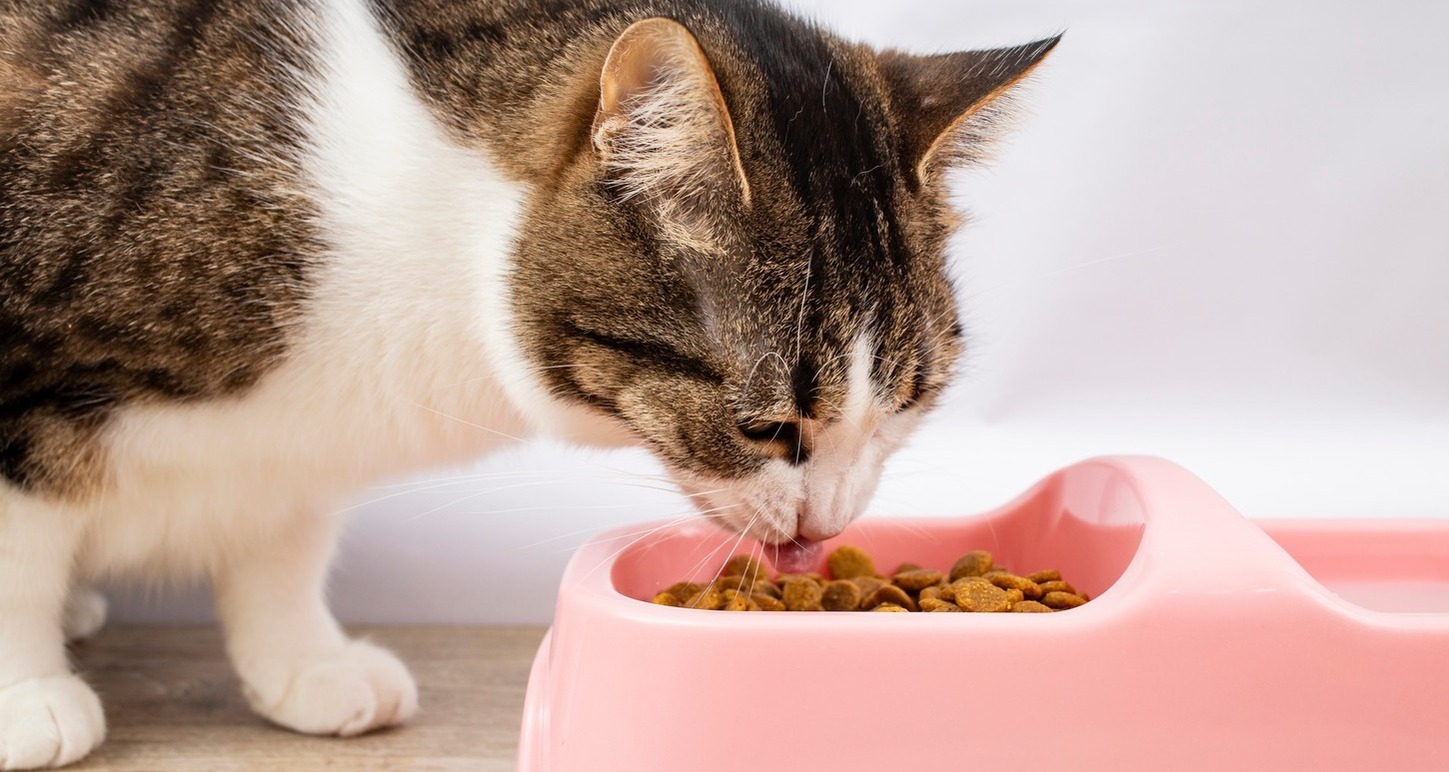
Which Type of Cat Food Is Best?
While this is undoubtedly an important question, it is also very difficult to answer. Why? Well, the “best” cat food is the one that suits you, your pet, and your life. This could be dry for one person, wet for another, and homecooked for someone else.
Not to mention the fact that the right choice will depend on factors such as your cat's age, health, lifestyle, and personal preferences. So, here’s a quick summary that may help decide:
Dry Cat Food
- • Best for: Busy pet owners looking for convenience and cost-effectiveness.
- • Concerns: May not provide enough moisture, so ensure your cat drinks plenty of water.
Wet Cat Food
- • Best for: Cats that need more hydration or those who are picky eaters.
- • Concerns: Expensive and needs refrigeration after opening.
Raw Cat Food
- • Best for: Cats with specific dietary needs or those whose owners prefer a natural diet.
- • Concerns: Risk of contamination and requires careful handling.
Fresh Cat Food
- • Best for: Owners who want high-quality ingredients and personalised nutrition plans for their cats.
- • Concerns: Can be costly and requires proper storage in your fridge or freezer.
Homemade Cat Food
- • Best for: Cats with allergies or dietary restrictions, or owners looking for complete control over ingredients.
- • Concerns: Nutritional imbalances if not carefully planned.
Complete/Complimentary Cat Food
- • Best for: Owners seeking convenience with the assurance that their cat's nutritional needs are met.
- • Concerns: Quality varies, so choose brands carefully.
Which Type of Food Is Best for Kittens?
 If you have a kitten, you must be aware that they have unique nutritional needs that differ from adult cats.
Kitten food needs to be higher in protein and fat to support rapid growth and development of your little friend.
It also contains important nutrients like taurine, DHA (an essential omega-3 fatty acid), and extra calories to fuel their energy levels – and anyone who has had a kitten will tell you, they – are – energetic – little - monkeys.
Choosing the right food for your kitten is crucial for their development during their first year.
The Best Food for Kittens
Wet food is often preferred for young kittens, as it’s easier to chew and provides much-needed hydration.
However, dry food formulated for kittens can also be introduced to help with dental development.
It’s essential to provide a mix of high-quality wet and dry kitten-specific foods to ensure balanced nutrition.
What Food to Avoid for Kittens
Avoid feeding kittens adult cat food, as it doesn’t provide the necessary nutrients for their growth.
Similarly, homemade diets or raw food should be approached cautiously and only under the guidance of a vet, as your kitten is particularly vulnerable to nutritional imbalances or infections.
Which Type of Food Is Best for Senior Cats?
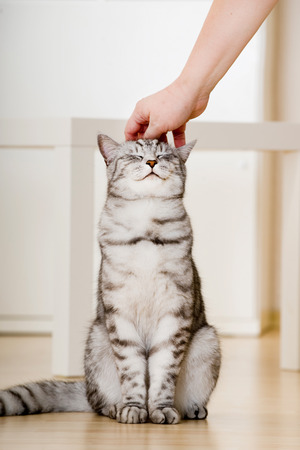 As your cats ages, their nutritional needs will change.
Senior cats (aged 7 and older) often have different dietary requirements to help manage weight, joint health, and kidney function. Your senior cat may also develop dental problems that make chewing dry food difficult, and they may become more sensitive to certain ingredients.
The Best Food for Senior Cats
Wet food is often recommended for senior cats due to its high moisture content, which helps support kidney function and hydration.
There are also specialised senior formulas available that contain joint-supporting nutrients like glucosamine and chondroitin which is great for keeping your older cat spry.
Also, high-protein, low-carbohydrate diets can help maintain muscle mass while preventing obesity.
What Food to Avoid for Senior Cats
While dry food can still be fed to your senior cat, it’s essential to monitor their dental health to ensure they can chew it properly. Cats with kidney issues or obesity may also benefit from a shift away from dry food, as it tends to be higher in carbohydrates.
A Time & Place for Everything
While the world of cat nutrition may seem like a scary landscape to navigate, at the end of the day each type of cat food has its benefits and drawbacks. Plus, they can all serve a purpose at different times in your cat’s life.
Some cats may prefer the taste and texture of wet food, while others might benefit from the convenience and dental health benefits of dry kibble. And don’t forget, a cat recovering from surgery or illness might thrive on a fresh or homemade diet with specific nutrients tailored to their condition.
It’s also important to remember that no two cats are alike.
While some cats may do well on a raw food diet, others may prefer the consistency and reliability of dry food. Your cat’s preferences, combined with their unique health needs, will play a significant role in determining the best diet.
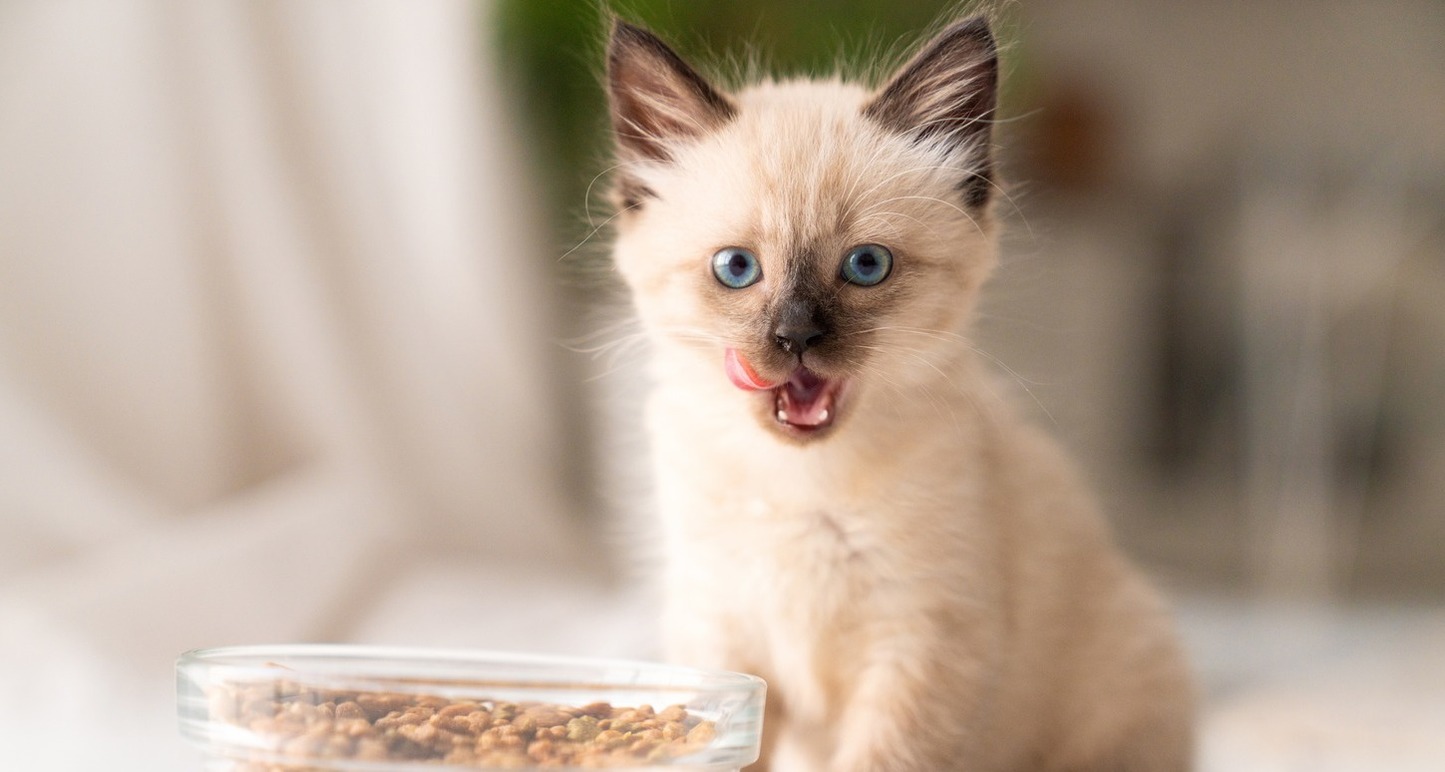
How to Choose the Best Food for Your Cat
You’ve made it this far, so when choosing the best food for your cat, there are several key factors to consider:
Age
Kittens, adult cats, and senior cats have different nutritional requirements. Make sure to choose food specifically designed for your cat’s life stage.
Health Needs
If your cat has specific health issues, such as kidney disease, obesity, or allergies, it may require a special diet. It’s always best to consult with your veterinarian to choose a food that supports your cat’s health.
Taste and Texture Preferences
Some cats are picky eaters, preferring wet food over dry, or vice versa. Experiment with different textures and flavours to find what your cat likes best.
Nutritional Content
Always look for cat food that is labelled “complete and balanced.” This means it meets the nutritional standards set by pet food regulatory bodies. And if you’re planning on homecooking their meals, be sure to consult with your vet to guarantee they’re getting all their vital nutrients.
Budget and Convenience
Consider how much time and effort you can dedicate to feeding your cat. Dry food is more convenient and cost-effective, but wet, raw, or fresh food may offer better health benefits.
In Conclusion
Ultimately, the best food for your cat will depend on their individual needs.
Regularly consult with your veterinarian to ensure that your cat is getting the appropriate nutrition, and always be mindful of any changes in their eating habits or health.
Frequently Asked Questions
Can I feed my cat the same food every day?
Yes, many cats do well on a consistent diet of the same high-quality food every day. However, it’s important to monitor your cat’s health and behaviour. If they develop food sensitivities or health issues, it may be necessary to switch foods. Introducing variety in moderation can also help prevent pickiness.
Should I switch to a senior-specific diet when my cat turns 7?
It’s not always necessary to switch immediately at age 7, but senior-specific diets are often formulated to address common aging issues like joint support and kidney health. Monitor your cat’s weight, activity level, and overall health, and consult your vet for advice on when and whether to transition to a senior formula.
Can my cat eat dog food?
No, cats should not eat dog food. Cats have different nutritional requirements, such as a need for taurine and higher protein levels, that are not met by dog food. Long-term feeding of dog food can lead to nutritional deficiencies in cats.
How much food should I feed my cat per day?
The amount of food your cat needs depends on their age, weight, and activity level. Most commercial cat foods include feeding guidelines on the packaging, but it’s always best to consult your vet to determine the right portion sizes for your individual cat.
Is it okay to leave dry food out all day?
Yes, some owners opt for "free feeding," where dry food is left out all day for cats to graze. This can work for cats that are good at self-regulating their intake. However, free feeding can lead to overeating and weight gain in less active cats. Portion control may be necessary to maintain a healthy weight.
Related Blog Posts Section
More From Our Blog
|